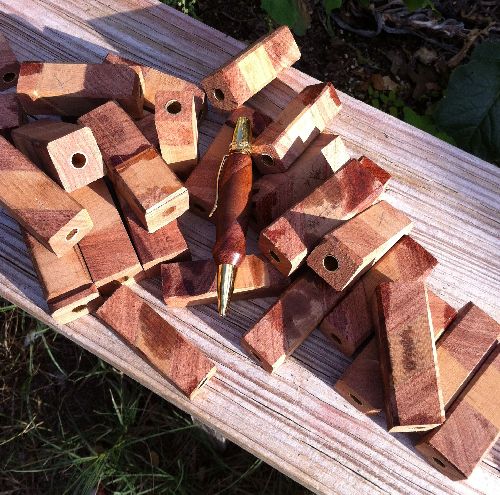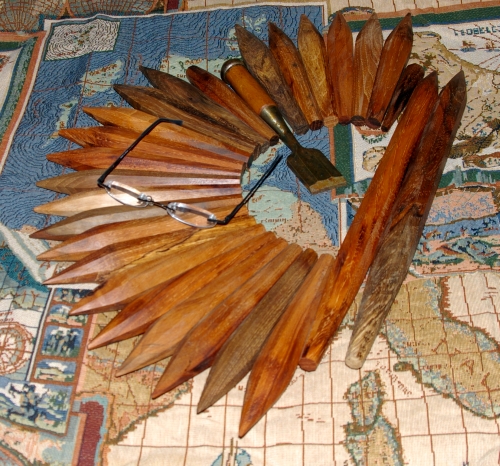I need some glue, lots of glue, epoxy preferably. I have looked around, I have lots of glue, a couple of boxes of glue, all of them are now strange hazardous waste. They are all well over a year old. Glues, most glues are dead in a year. Some may go a few more years, but they weaken considerably as they age.
So the glues I have, can sort of bond things, but they won’t set or hold or whatever. So I look around the stores, and cannot find anything with a date showing. If I can find it reasonably fresh at the store, it is one of those fine glues that you cannot remove or repair or both. Most woodworking glues theses days are best at making sure no glue can grip in case of repair needs. That makes it worthless unless I want a glue proof paint. Not having a date showing seems downright criminal to me. They can brag all day how strong they are, but without a date, I don’t know if I need to use it all this week, or if I should have bought it a week ago and used it then. Give me a use before date, or all the glue claims are worthless. They might as well be selling snake oil. I have yet to see the placebo effect work with glue.
I have had to abandon some rather nice and expensive projects due to poor glue or old glue that made bad joints while preventing further work. So now I don’t buy glue that I don’t know the expiration date on. I especially don’t buy glue that has dust on the package or is bought bulk by the distributor and warehoused until it is sent to the store. Since most glues are at half or less strength after 1 year of sitting there, that precludes my buying glue from the big name stores. Is there a warning on the glue that mentions shelf life? These glue manufacturers, even the ones that make half decent glue, would have a clear expiration date if they were trying to provide me with a trustworthy product.
If I account hours and expenses involved in obtaining wood, curing the wood and shaping the wood, that was ruined by bad glue used within a week of purchase, these glue manufacturers, who know just how lame this is, have cost me quite a bit. Now, I know all about glue failure, and I am happy to provide that education to others. The first lesson is to stop buying faith based glue. If it expires, and does not have an expiration date, clearly on the bottle, then it is probably a meld of toxic compounds with no evidence of decent effect.
So I like four glues now, Cyanoacrylate, Barge Cement, Hide Glue, and Ecopoxy.
Cyanoacrylate instant adhesive is cool stuff and it makes a great finish. cyanoacrylate is rated for 1-2 years, but if you put it in the freezer, it may have an unlimited shelf life. Sharp impact can fracture the bond yet sometimes it will not come loose no matter what you do. The thinner for cyanocrylate is acetone. Acetone is one of those see a physician quick, and pray the mutation is benign or the organ killed was unimportant, sort of poisons. Not the sort of thing I want to soak my wood in, thank you, very, very much. So I use super glue, but I don’t entirely trust it except as a sort of varnish. If I need a leather glue for a project that will not flex, then it is a pretty nice glue. Because it usually does not have an expiration date on it, I have no idea if the stuff can be used as a regular glue reliably. I do know that even the old stuff makes a good finish and will bond my finger together quite well. Some day I need to get some that I know is still good and try it out. It may be that the rare and random occasion of the stuff being really good, happened because I was accidentally sold some that had not expired.
Barge Cement is great, but it has all sorts of VOC issues. Not the safest to handle or breath when gluing. With some thinner, which is toluene, I have been able to thin and use it for years and years. If however you are brave enough to read the MSDS for toluene, you will read a dry rendition of total fear. So I still use Barge Cement on a clear windy day, outside, with surgical gloves on, when I need something that can glue shoe soles or similar projects. I have some, but I don’t consider it my go to glue. I do leatherwork, so Barge is a must have but Barge is of limited use to me.
Hide glue is great, sadly I am out of it. Perhaps because it is great. It is not weather proof, but it is strong and draws in when it drys. It can also be removed with steam, so I love the stuff. It is not great for mounting steel bits into tool handles. it is not great for stuff that may get moisture. For so much else though, it rules. You end up spending a lot more getting a pot for using it, than you will on glue, unless you do a lot of veneering. Hide glue does take a bit of planning and warm up, but it has the unique quality of curing to full strength in a minute or so. This means you can assemble and glue, without waiting on parts to cure. Once you get past the initial inconvenience of needed time and a pot to use it, it is the most convenient of glues.
Then there is my favorite glue of them all. Ecopoxy! I have put it to one of the worst tests that I could come up with, gluing a broken chair leg, right where the wheel connects. This has held perfectly now for about a year. The chair just had a different leg break. So I now am totally in love with the stuff and it has passed a test that I consider fairly unreasonable. I now need more of it so I can fix the chair!
I have already praised it as a glue, and they now sell a sampler size. That makes it a bit more accessible for the first time user to try out. Ecopoxy is tough, water proof, rated as food safe, after it has cured and it does not stink. It also, has an unlimited shelf life. For glues, you can translate “unlimited shelf life,” to “worth having on your shelf.” These words mean the same thing.
I needs my ecopoxy.
Bob





 A page Dedicated to My Writing
A page Dedicated to My Writing
Recent Comments